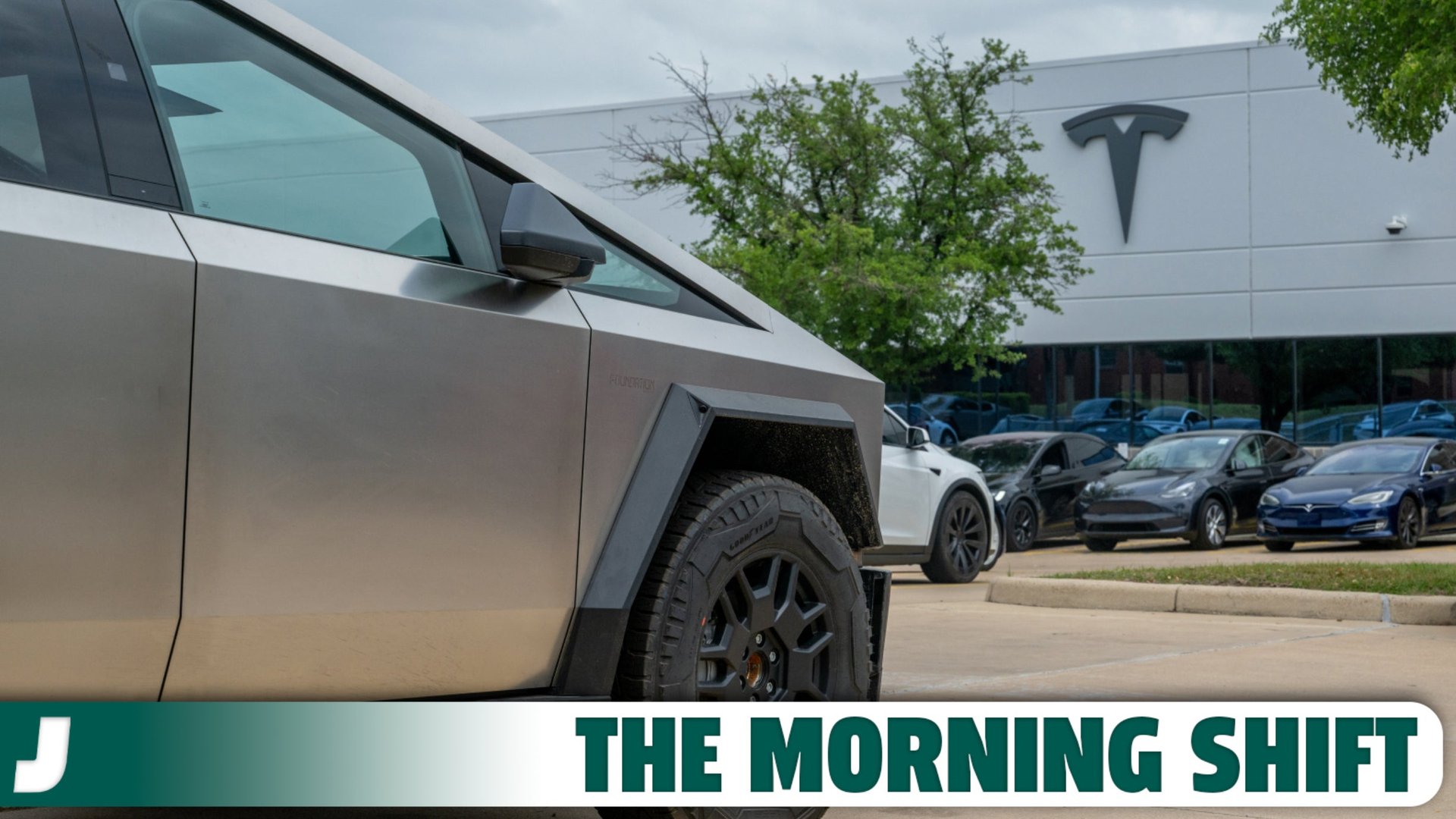The Tesla Cybertruck is already very popular
Elon Musk's electric pickup truck is the second-best seller on the market, behind only the the Ford F-150 Lightning

The Tesla Cybertruck is already outselling most of the electric pickup truck market, losing out only to the Ford F-150 Lightning. In March, the Cybertruck notched 1,158 new vehicle registrations. That’s more than the Rivian R1T’s 548, the Chevy Silverado EVs’ 319, and the GMC Hummer EV’s 192. Still, everyone lagged behind the Lightning’s healthy 2,893 registrations. From Automotive News:
Suggested Reading
“In its fourth month, the Cybertruck had over a thousand registrations and outsold the R1T by more than two to one,” said Tom Libby, associate director of industry analysis at S&P Global Mobility. “And frankly, I’m a little bit surprised. The Cybertruck is very, very unique, and it’s interesting that it’s been able to do that type of volume so quickly.”
Registration data serves as a proxy to official sales numbers since Tesla doesn’t break out its U.S. sales from global deliveries. Also, Rivian doesn’t report sales by model, and other EV makers omit some model data.
Prior to going on sale, the Cybertruck had amassed a million reservations from Tesla fans who put down a $100 refundable deposit, Tesla CEO Elon Musk said in October.
However, the base price of the Cybertruck rose to $60,990 when the revised price was announced at launch from $39,900 when it was first presented in November 2019. Both prices are before shipping.
In addition, Tesla started production with a special Foundation Series that starts at $99,990 before shipping. Tesla said on its website that lower trims will go on sale next year.
To more drastically undercut the Cybertruck Foundation Series, Rivian cut the base price of the R1T to $71,700, a $3,100 drop. The Lightning starts at $57,090, and a base Silverado EV will cost buyers $74,900, both including shipping. Outside of the Cybertruck, the Hummer EV is the most expensive with a $98,845 base price.
In the first quarter, 8,589 Lightnings were registered, which represents a 51% increase year-over-year. At the same time, the Cybertruck had 1,791, and the R1T had 1,786 registrations. That works out to a 56% year-over-year decline. Not ideal for Rivian, no.
